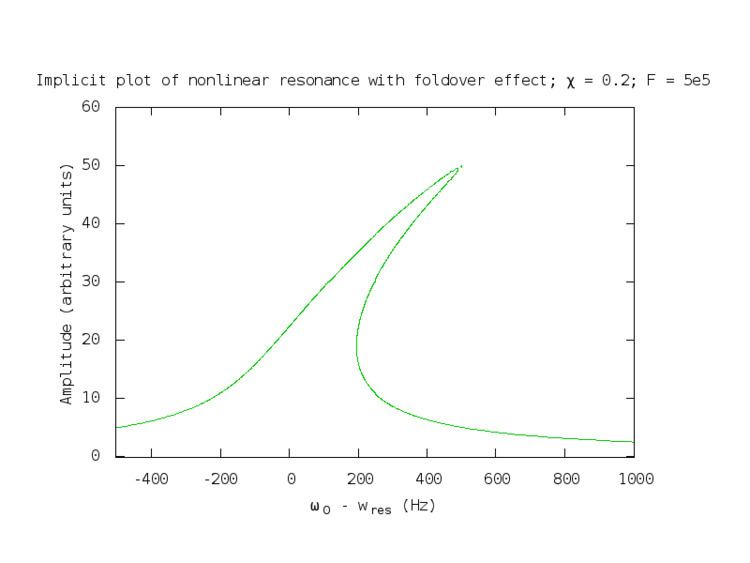 | ||
In physics, nonlinear resonance is the occurrence of resonance in a nonlinear system. In nonlinear resonance the system behaviour – resonance frequencies and modes – depends on the amplitude of the oscillations, while for linear systems this is independent of amplitude.
Contents
Description
Generically two types of resonances have to be distinguished – linear and nonlinear. From the physical point of view, they are defined by whether or not external force coincides with the eigen-frequency of the system (linear and nonlinear resonance correspondingly). The frequency condition of nonlinear resonance reads
with possibly different
Main notions and results of the theory of nonlinear resonances are:
- The use of the special form of dispersion functions
ω = ω ( k ) , appearing in various physical applications allows to find the solutions of frequency resonance condition. - The set of resonances for given dispersion function and the form of resonance conditions is partitioned into non-intersecting resonance clusters; dynamics of each cluster can be studied independently (at the appropriate time-scale).
- Each resonance cluster can be represented by its NR-diagram which is a plane graph of the special structure. This representation allows to reconstruct uniquely 3a) dynamical system describing time-dependent behavior of the cluster, and 3b) the set of its polynomial conservation laws which are generalization of Manley–Rowe constants of motion for the simplest clusters (triads and quartets)
- Dynamical systems describing some types of the clusters can be solved analytically.
- These theoretical results can be used directly for describing real-life physical phenomena (e.g. intraseasonal oscillations in the Earth's atmosphere) or various wave turbulent regimes in the theory of wave turbulence.
Nonlinear resonance shift
Nonlinear effects may significantly modify the shape of the resonance curves of harmonic oscillators. First of all, the resonance frequency
where
where
Nonlinear frequency response functions
Generalized frequency response functions, and nonlinear output frequency response functions allow the user to study complex nonlinear behaviors in the frequency domain in a principled way. These functions reveal resonance ridges, harmonic, inter modulation, and energy transfer effects in a way that allows the user to relate these terms from complex nonlinear discrete and continuous time models to the frequency domain and vice versa.
